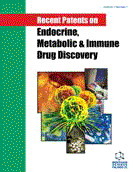Abstract
One option for treating osteoporosis is a group of medicines known as selective estrogen receptor modulators (SERMs). They can act as an estrogen receptor agonist in some tissues, whereas as an antagonist in others. In relation to this ago-antagonistic action, SERMs have a positive effect on bones, the serum lipid profile and the cardio-vascular system. Moreover they can protect against the development of some estrogen-dependent neoplasms. The first used SERM was tamoxifen, but due to its negative effect on the endometrium it is not indicated in osteoporosis. Raloxifene, which is currently in use, besides involving a reduction of risk of vertebral fractures has also a beneficial influence on the risk of endometrial and breast cancer. On the other hand, raloxifene aggravates vasomotor symptoms and its bone-protecting effect is limited. At present, new SERMs (ospemifene, lasofoxifene, bazedoxifene) are being introduced on the market or researched in clinical trials. In recent years, many interesting patents referring to these new SERMs have been submitted. The implementation of SERMs in combined therapy of osteoporosis is currently also under research. Some SERMs, such as arzoxifene or levormeloxifene have been withdrawn from the trials because of serious side effects. Many other compounds possessing estrogen activity have been identified and patented in recent years, but their clinical significance is not known. Future studies on SERMs may result in new preparations that are adjusted to patients individual needs.
Keywords: Osteoporosis, selective estrogen receptor modulators, menopause.
 10
10





















